This article was co-authored by Tara Coleman and by wikiHow staff writer, Christopher M. Osborne, PhD. Tara Coleman is a Clinical Nutritionist who has a private practice in San Diego, California. With over 15 years of experience, Tara specializes in sports nutrition, body confidence, and immune system health and offers personalized nutrition, corporate wellness, and online learning courses. She received a BS in Biology from James Madison University and spent six years in the pharmaceutical industry as an analytical chemist before founding her practice. Tara has been featured on NBC, CBS, Fox, ESPN, and Dr. Oz The Good Life as well as in Forbes, Cosmopolitan, Self, and Runner’s World.
There are 15 references cited in this article, which can be found at the bottom of the page.
This article has been viewed 74,141 times.
Congratulations on setting the goal to eat a healthier diet! To make the job simpler and more likely to succeed, take the time to do some planning. Work with a registered dietitian and doctor to evaluate your current diet and craft your new one. Then, plan out your meals a week at a time, emphasizing healthy choices like fruits and vegetables. Finally, shop for groceries and prepare your meals according to your plan and stick to it.
Steps
Evaluating Your Goals and Current Diet
-
1Work with a registered dietitian to set the best dietary plan for you. While everyone can benefit from eating a healthier diet, different people have different dietary needs and goals. Your dietitian can help you devise the ideal dietary plan for you, based on factors like your current weight and fitness level and any medical conditions you have.[1]
- If your goal is to lose weight, for instance, you might say, "I want to shed some pounds—how much should I aim for, and what's the best way for me to get there?"
- Ask your doctor for a referral to a dietitian.
-
2Set clear dietary goals for yourself. It’s a great start that you’re determined to “eat healthy,” but you need to be more specific about what exactly you want to accomplish. After consulting with your doctor, write down a list of clear, achievable goals that you intend to meet.[2]
- You may want to start by writing down what you’d like to change about your current diet. You might write things like: “I need to eat more vegetables,” or, “I need to snack less.”
- Then, write down the dietary goals you intend to achieve. For example: “I will fill half my plate with vegetables at every meal,” or, “I will only snack on healthy foods that I’ve prepared myself.”
Advertisement -
3Set your goals in stages if you’re making a major overhaul. It will probably be very difficult for you to completely change your entire diet all of a sudden, and you’ll end up more likely to fall back into your old eating patterns. If you need to make major dietary changes, start by setting 2 or 3 goals, then set 2 or 3 more once you’ve achieved the first batch.[3]
- You might, for instance, set a goal to reduce the number of times you buy sodas or snacks from the vending machines at work, then move on to eliminating them completely.
- Or, you might start with a positive goal, like eating fresh fruit for breakfast every morning, then move on to eliminating bacon from your breakfast menu.
-
4Start a food diary to track your progress. Write down your current goals in the journal, then keep track of everything that you eat and drink at each meal. Recording your diet will give you tangible evidence of your progress, or tangible motivation to get back on track.[4]
- Before you even begin your new diet, consider keeping track of your current eating habits for a few days or even weeks. This gives you clear evidence of your starting point, and it can be useful to bring it to your dietitian when establishing your new diet.
- You can keep an old-fashioned food diary, or use one of many smartphone apps. You may find the apps more convenient, and they also usually offer detailed nutritional information for the foods you’re eating.
Planning Meals with Healthy Food Choices
-
1Make fruits and veggies the centerpieces of your diet. No matter your particular dietary needs or goals, fruits and vegetables should have starring roles in your plan. Generally speaking, the average adult should aim to eat 5-9 servings of fruits and veggies per day. Another way to look at this is to fill half of your plate at every meal with vegetables and fruits.[5]
-
2Complement your fruits and veggies with lean proteins. Lean proteins include poultry, fish, eggs, nuts, and beans, among other options. Aim for about 3-5 servings per day, with 1 serving being about the size of a deck of cards.[8]
- Other proteins, like beef, are higher in calories and fat and should be eaten sparingly.
-
3Choose whole grain breads, cereals, rice, and pasta. Whole grain options include whole wheat, brown rice, quinoa, farro, and millet, among others. Aim for about 5-6 servings of whole grains per day if you're a woman or 6-7 servings per day if you're a man, with 1 slice of whole grain bread equivalent to a single serving.[9]
- Processed grains, like white bread, white rice, and traditional pasta, are stripped of many of their health benefits—but not their calories!
-
4Include healthy fats in your diet. Fat isn't necessarily a bad word when you're trying to eat healthy—you just need to eat the right kinds of fat! You can get healthy fats from foods like avocados, olive oil, nuts, flax seeds, and fatty fish like salmon.[10]
- Because all fats, even healthy ones, are high in calories, keep your daily intake fairly limited.
-
5Make unhealthy food choices 20% or less of your daily diet. Instead of trying to eliminate all unhealthy foods from your diet all at once, incrementally cut back and replace them with healthier options. Your end goal should be for at least 80% of your daily diet to be healthy foods, but it’s okay to indulge with that other 20%!
- Unhealthy foods to cut back on include: processed foods, packaged foods, and fast food; foods that are high in sugar, sodium, and/or saturated or trans fats; and alcohol, especially if you consume more than 1-2 drinks per day.[11]
- Using an 80/20 plan, you might figure that gives you about 4 "cheat" meals per week, or you might spread it out and have an unhealthy "cheat" snack each day, as long as the rest of your meals are healthy. If you're eating a "cheat" snack daily, you may want to cut back on the amount over time.
-
6Create a weekly meal plan that’s built around healthy food choices. A meal plan lays out all your meals and snacks for the week ahead. Meal planning helps you to stay on track and organized as you develop your new dietary routines.[12]
- Look for online guides and apps that can provide advice and menu ideas for your healthy meal planning. Even better, work with a registered dietitian who can guide you through the process of creating meal plans each week.
- Meal planning can help you eat healthier, and it can also save you money and time. You’ll know exactly what groceries you need to buy each week, and you can factor in “leftovers nights” to make full use of extra food from previous meals.
Buying and Preparing Your Meals
-
1Make a grocery list based on your meal plan, and stick to it. With your meal plan as your guide, you can draw up a shopping list that has everything you need and nothing you don’t for the week ahead. So make sure you buy what’s on the list and nothing more![13]
- Especially when you’re new to meal planning, use recipes to guide the amounts of different foods you need to buy. Over time, you’ll be able to accurately estimate how much you’ll need each week.
- Focus on your list while you shop, and check off items as you pick them up. Fight the temptation to buy foods (especially unhealthy ones) that aren’t on the list!
- You may find it easier to stick to your list if you don’t grocery shop when you’re hungry.
-
2Look for healthy shortcuts to cut back on your meal prep time. For the most part, you’ll want to avoid processed and packaged foods when planning your meals and buying your groceries. However, there are some ways to cut back on your prep time without sacrificing nutritional value.
- Fresh-frozen fruits and vegetables have the same nutrients as fresh ones, as do, for the most part, canned fruits and veggies. However, watch for added sodium in canned vegetables and added sugar in canned fruits.[14]
- You can also buy pre-cut, washed, and bagged salads and veggies, diced melons and pineapples, and other similar options.
- Additionally, you might consider getting pre-grilled and frozen chicken breast strips that you only need to heat and serve. Such conveniences will increase your grocery bill, however.
-
3Assemble your meals in batches to streamline meal prep. Since you’ve planned your meals for the week ahead and have all the ingredients you’ll need, consider setting aside an afternoon to prep (and, in many cases, cook) all your meals for the week. Use your refrigerator and freezer to keep the meals ready to go until the appropriate mealtime.[15]
- Once you get the hand of batch cooking, you may want to start taking a whole day or weekend to prepare all your meals for the month ahead. You may need to invest in a larger freezer, though!
- Consider starting a batch-cooking club with friends or neighbors. That way, you can trade some of your dishes for some of theirs, thereby cutting back on the number of different dishes you need to make.
-
4Limit how often you eat out, and eat healthy when you do. You may want to add in a few eat-out or take-in meals per week to your meal plan, but keep them as limited as you can. It’s more difficult to eat healthy this way, as opposed to when you prepare your meals yourself. When you are eating out, try the following:[16]
- Study the menu beforehand, ideally even before going to the restaurant.
- Ask for advice on healthy menu options from the restaurant staff.
- Eat a healthy snack beforehand, and order small portion sizes.
- Drink water with your meal instead of sugary beverages or alcohol.
How Do I Evaluate Nutrient Density Of My Food?
Expert Q&A
-
QuestionWhat is a healthy diet for a day?
 Tara ColemanTara Coleman is a Clinical Nutritionist who has a private practice in San Diego, California. With over 15 years of experience, Tara specializes in sports nutrition, body confidence, and immune system health and offers personalized nutrition, corporate wellness, and online learning courses. She received a BS in Biology from James Madison University and spent six years in the pharmaceutical industry as an analytical chemist before founding her practice. Tara has been featured on NBC, CBS, Fox, ESPN, and Dr. Oz The Good Life as well as in Forbes, Cosmopolitan, Self, and Runner’s World.
Tara ColemanTara Coleman is a Clinical Nutritionist who has a private practice in San Diego, California. With over 15 years of experience, Tara specializes in sports nutrition, body confidence, and immune system health and offers personalized nutrition, corporate wellness, and online learning courses. She received a BS in Biology from James Madison University and spent six years in the pharmaceutical industry as an analytical chemist before founding her practice. Tara has been featured on NBC, CBS, Fox, ESPN, and Dr. Oz The Good Life as well as in Forbes, Cosmopolitan, Self, and Runner’s World.
Clinical Nutritionist So, first of all, don't skip breakfast. Eat at least 3 meals. It's also okay to eat smaller meals more frequently if you prefer. Get plenty of vegetables, fruits, whole grains, and some lean proteins. Stay away from unhealthy fats (a little healthy fat is okay). It isn't rocket science!
So, first of all, don't skip breakfast. Eat at least 3 meals. It's also okay to eat smaller meals more frequently if you prefer. Get plenty of vegetables, fruits, whole grains, and some lean proteins. Stay away from unhealthy fats (a little healthy fat is okay). It isn't rocket science! -
QuestionWhere can you get omega three fatty acids?
 Tara ColemanTara Coleman is a Clinical Nutritionist who has a private practice in San Diego, California. With over 15 years of experience, Tara specializes in sports nutrition, body confidence, and immune system health and offers personalized nutrition, corporate wellness, and online learning courses. She received a BS in Biology from James Madison University and spent six years in the pharmaceutical industry as an analytical chemist before founding her practice. Tara has been featured on NBC, CBS, Fox, ESPN, and Dr. Oz The Good Life as well as in Forbes, Cosmopolitan, Self, and Runner’s World.
Tara ColemanTara Coleman is a Clinical Nutritionist who has a private practice in San Diego, California. With over 15 years of experience, Tara specializes in sports nutrition, body confidence, and immune system health and offers personalized nutrition, corporate wellness, and online learning courses. She received a BS in Biology from James Madison University and spent six years in the pharmaceutical industry as an analytical chemist before founding her practice. Tara has been featured on NBC, CBS, Fox, ESPN, and Dr. Oz The Good Life as well as in Forbes, Cosmopolitan, Self, and Runner’s World.
Clinical Nutritionist You can take a supplement if you really want to make sure you get enough of it. It's found naturally in fish, walnuts, and seeds. There's a small bit of it found in grass-fed beef as well.
You can take a supplement if you really want to make sure you get enough of it. It's found naturally in fish, walnuts, and seeds. There's a small bit of it found in grass-fed beef as well. -
QuestionIs a paleo diet safe and healthy?
 Tara ColemanTara Coleman is a Clinical Nutritionist who has a private practice in San Diego, California. With over 15 years of experience, Tara specializes in sports nutrition, body confidence, and immune system health and offers personalized nutrition, corporate wellness, and online learning courses. She received a BS in Biology from James Madison University and spent six years in the pharmaceutical industry as an analytical chemist before founding her practice. Tara has been featured on NBC, CBS, Fox, ESPN, and Dr. Oz The Good Life as well as in Forbes, Cosmopolitan, Self, and Runner’s World.
Tara ColemanTara Coleman is a Clinical Nutritionist who has a private practice in San Diego, California. With over 15 years of experience, Tara specializes in sports nutrition, body confidence, and immune system health and offers personalized nutrition, corporate wellness, and online learning courses. She received a BS in Biology from James Madison University and spent six years in the pharmaceutical industry as an analytical chemist before founding her practice. Tara has been featured on NBC, CBS, Fox, ESPN, and Dr. Oz The Good Life as well as in Forbes, Cosmopolitan, Self, and Runner’s World.
Clinical Nutritionist The paleo diet is good because it focuses on quality and emphasizes vegetables. In that sense, I'd say it's safe and healthy. I don't think cutting out certain foods, like beans, lentils, dairy, and grains, is necessarily something you really need to do. But in general, it's not a bad place to be diet-wise.
The paleo diet is good because it focuses on quality and emphasizes vegetables. In that sense, I'd say it's safe and healthy. I don't think cutting out certain foods, like beans, lentils, dairy, and grains, is necessarily something you really need to do. But in general, it's not a bad place to be diet-wise.
References
- ↑ https://www.eatright.org/food/resources/learn-more-about-rdns/10-reasons-to-visit-an-rdn
- ↑ https://www.eatright.org/food/resources/learn-more-about-rdns/10-reasons-to-visit-an-rdn
- ↑ https://www.niddk.nih.gov/health-information/diet-nutrition/changing-habits-better-health
- ↑ https://www.health.harvard.edu/blog/why-keep-a-food-diary-2019013115855
- ↑ Tara Coleman. Clinical Nutritionist. Expert Interview. 22 October 2020.
- ↑ https://www.choosemyplate.gov/vegetables
- ↑ https://www.choosemyplate.gov/fruit
- ↑ http://www.choosemyplate.gov/protein-foods
- ↑ https://www.choosemyplate.gov/grains
- ↑ https://www.heart.org/en/healthy-living/healthy-eating/eat-smart/fats/dietary-fats
- ↑ Tara Coleman. Clinical Nutritionist. Expert Interview. 22 October 2020.
- ↑ https://www.nhlbi.nih.gov/health/educational/lose_wt/eat/calories.htm
- ↑ https://health.clevelandclinic.org/10-expert-tips-grocery-shopping-budget/
- ↑ https://my.clevelandclinic.org/health/articles/15426-sodium-controlled-diet
- ↑ https://blog.myfitnesspal.com/no-fail-meal-planning-batch-cooking-plan/
- ↑ https://www.cdc.gov/salt/reduce_sodium_tips.htm
- ↑ https://www.pbmchealth.org/news-events/blog/5-top-reasons-why-you-should-avoid-skipping-meals
About This Article
To plan a healthy diet, start by making a list of clear, achievable goals for yourself. For instance, if you want to eat more vegetables, one of your goals could be to fill half of your plate with vegetables at every meal. To make it easier to transition to new habits, set your goals in stages. You might start with the goal of eating fresh fruit at breakfast every morning for a while, and then move on to eliminating bacon from your breakfast menu. As you go, write down everything you eat and drink in a food journal. This will give you tangible evidence of your progress, as well as motivation to get back on track if you stray from your plan. For more tips from our Dietary co-author, like how to stick to your plan by doing weekly meal preps, keep reading!
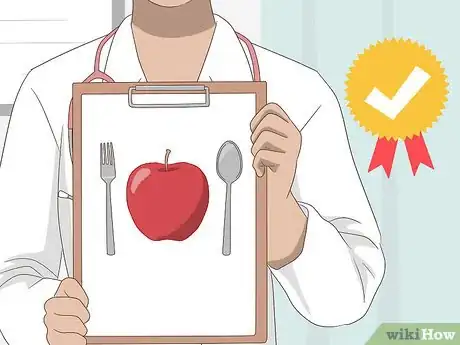

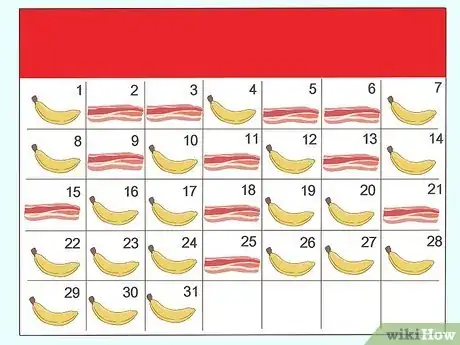
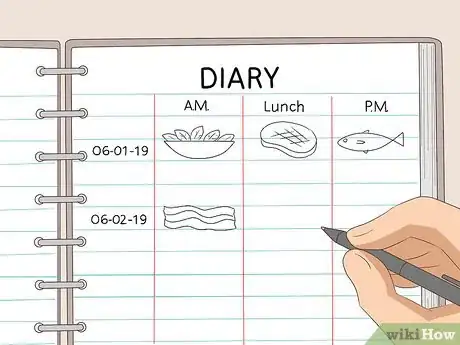
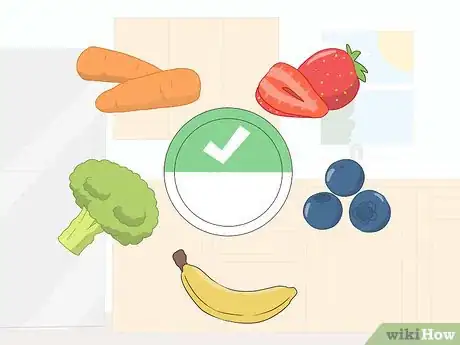

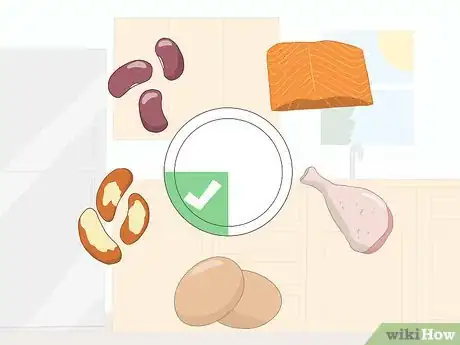
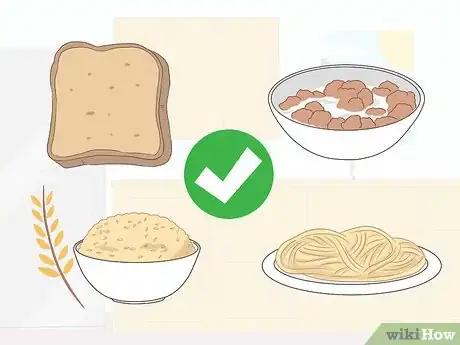
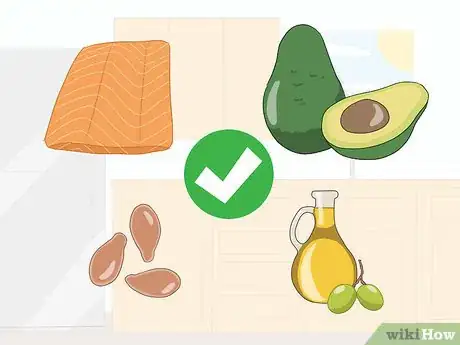

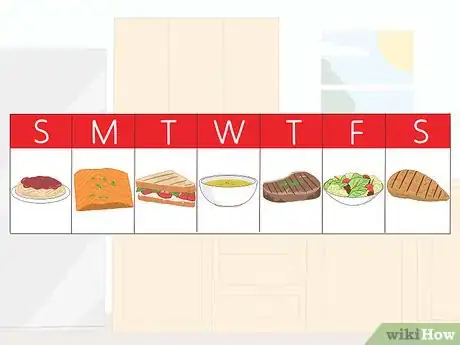
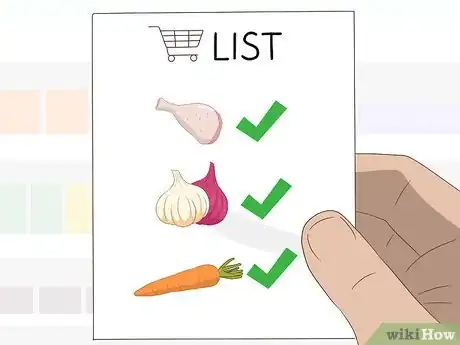
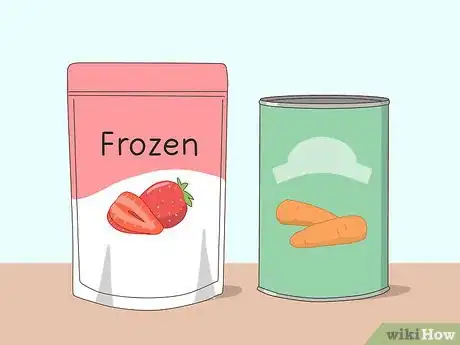
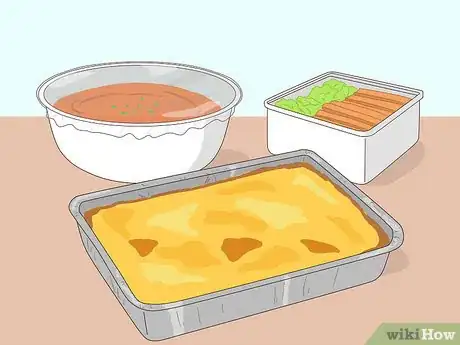
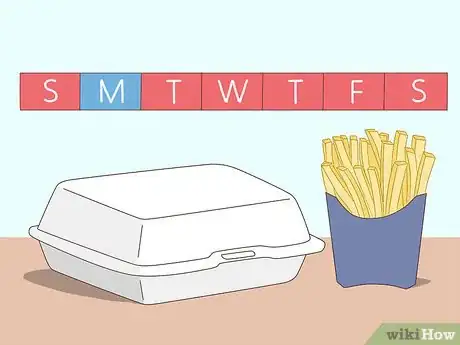



-Step-3-Version-3.webp)























































Medical Disclaimer
The content of this article is not intended to be a substitute for professional medical advice, examination, diagnosis, or treatment. You should always contact your doctor or other qualified healthcare professional before starting, changing, or stopping any kind of health treatment.
Read More...